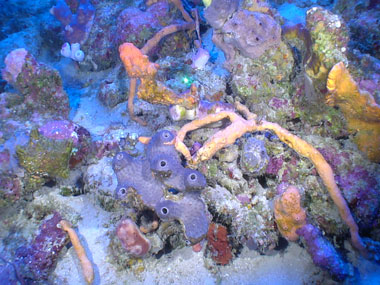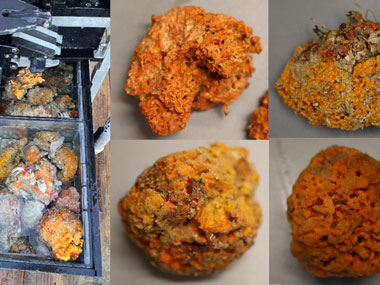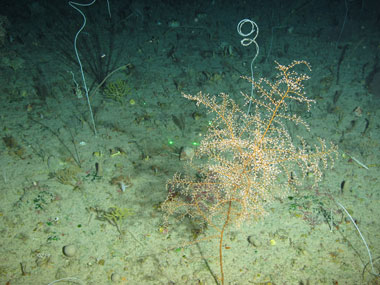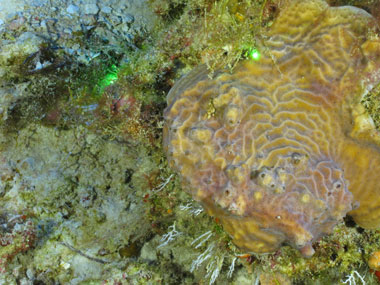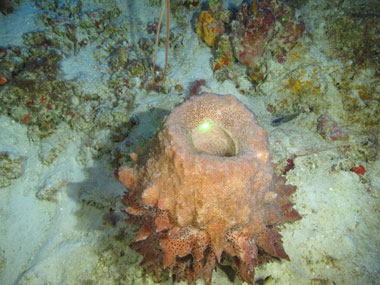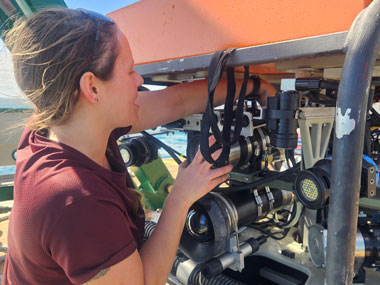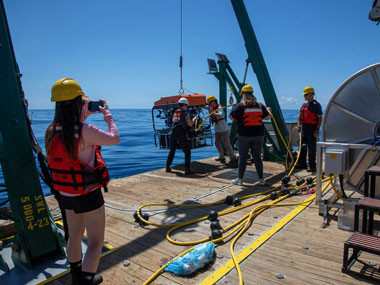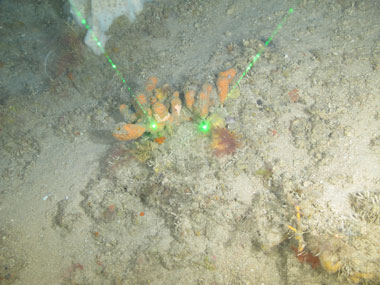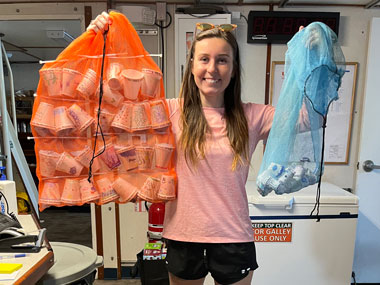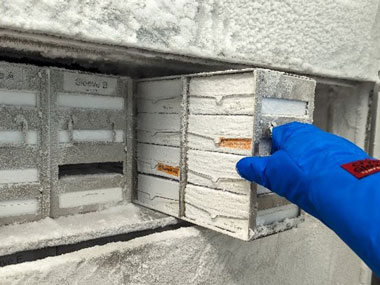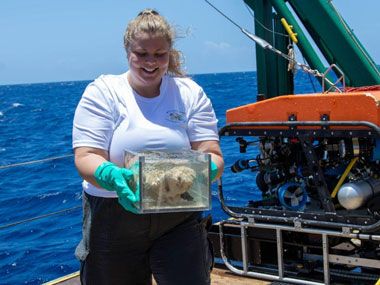Exploration of Deepwater Habitats off Puerto Rico and the U.S. Virgin Islands for Biotechnology Potential
Dates
April 10 - 21, 2024
Vessel
Research Vessel F.G. Walton Smith
Location
Around Puerto Rico
Primary goal
Collect marine organisms (e.g., sponges, corals, and microorganisms) that may contain natural products that can be developed into useful pharmaceutical products
Primary technologies
Remotely operated vehicle
Expedition Summary
April 10-21, 2024, a research team led by scientists at Florida Atlantic University’s Harbor Branch Oceanographic Institute (HBOI) explored marine habitats in deepwater areas around Puerto Rico. Using a Mohawk remotely operated vehicle (ROV), they sought out marine organisms (e.g., sponges, corals, and microorganisms) that may contain natural products that can be developed into useful pharmaceutical products.
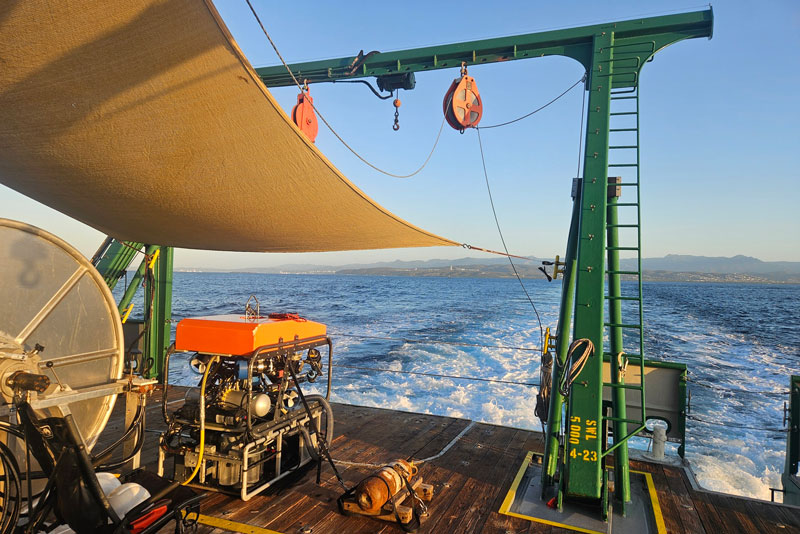

During the expedition, the team conducted 16 successful ROV dives — as many as three a day — to depths that ranged from 70 to 505 meters (230 to 1,657 feet), collecting video, still photos, and samples. Team members included a sponge expert and a coral expert. From their monitors in the ship’s control room, they watched video of the dives, looking for sponges and gorgonian corals, and collecting those that either were different from past collections or that are known to have rich chemistry in the hopes of finding some that have benefits to human health.
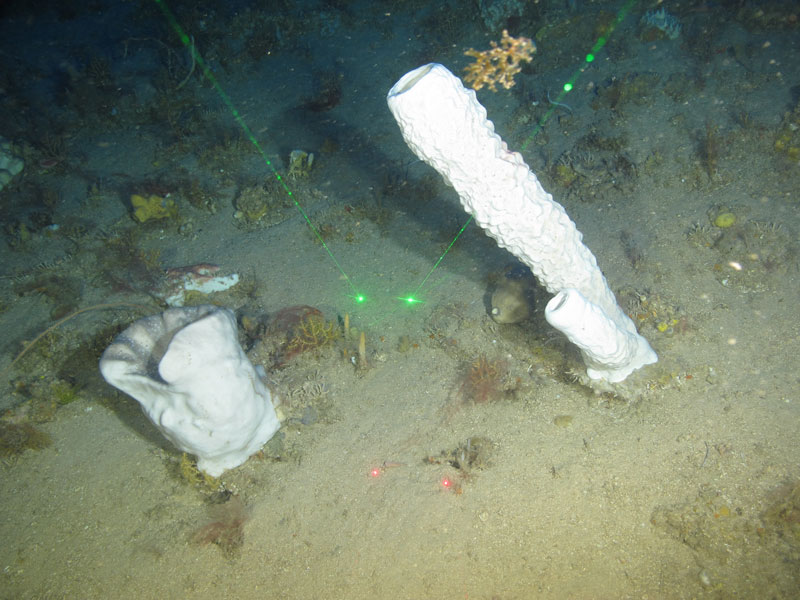
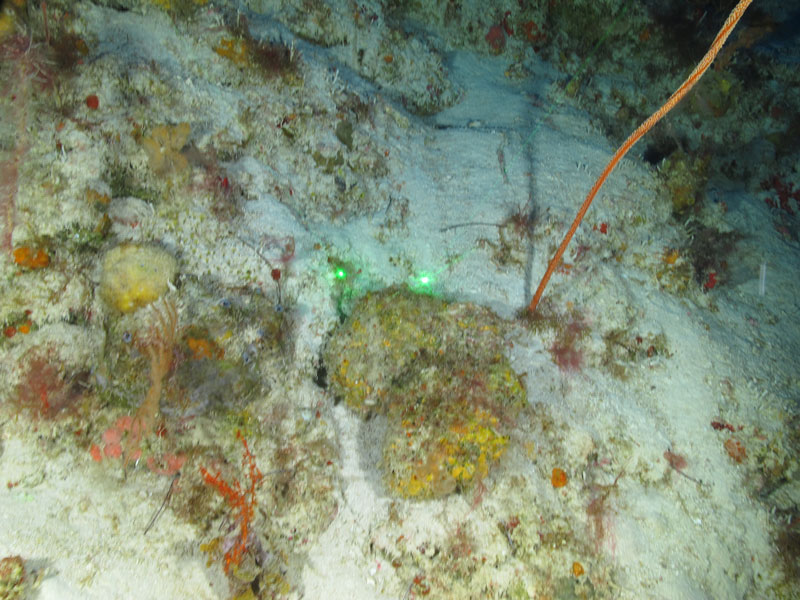
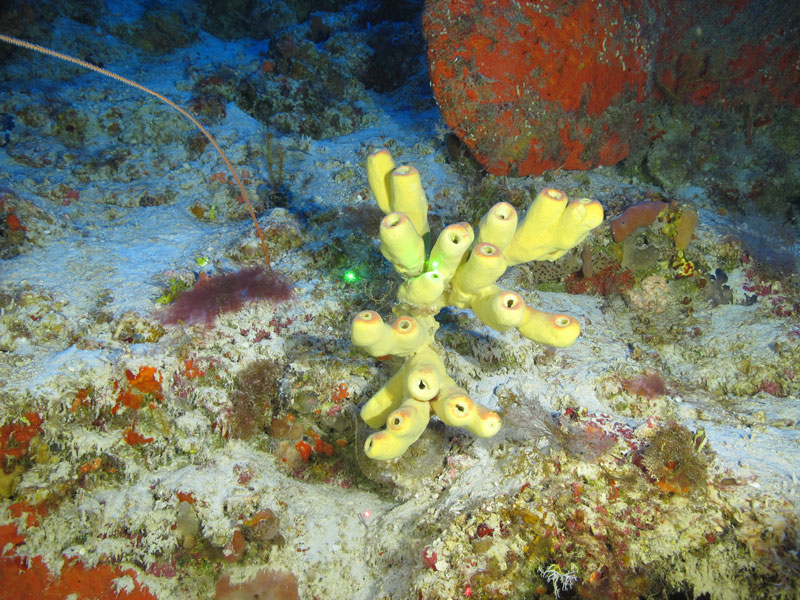
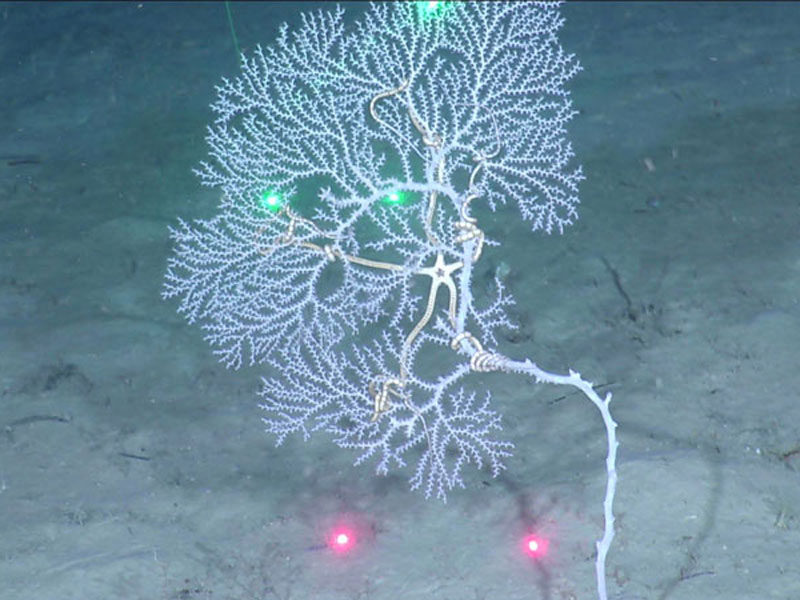
In total, the team collected 136 samples: 112 sponges, 17 octocorals, 2 stony corals, 2 black corals, and 1 worm, as well as some red and green algae. One of the sponges collected may be new to science, but DNA sequencing will need to be done before we know for sure.

As soon as the samples were brought to the surface, they were removed from the ROV’s bioboxes, and the processing began. First, the samples were organized and tagged. Then, to avoid contamination that may be introduced later in the processing, samples were "subsampled" (small pieces were taken) for a variety of purposes:
- All samples were subsampled for DNA archiving and identification.
- Some sponges were subsampled and then their cells were separated and frozen for HBOI’s sponge biobank.
- Two samples were subsampled each day for microbial culture (which enables microbes to multiply) for the microbial libraries at HBOI and Mote Marine Lab.
After this initial subsampling, each sample was photographed and then further subsampled for a quick chemistry analysis and a voucher to be stored and made available for future taxonomic studies. Whatever was left of the sample after all the subsampling was frozen for future chemical studies and testing to evaluate their pharmaceutical potential.
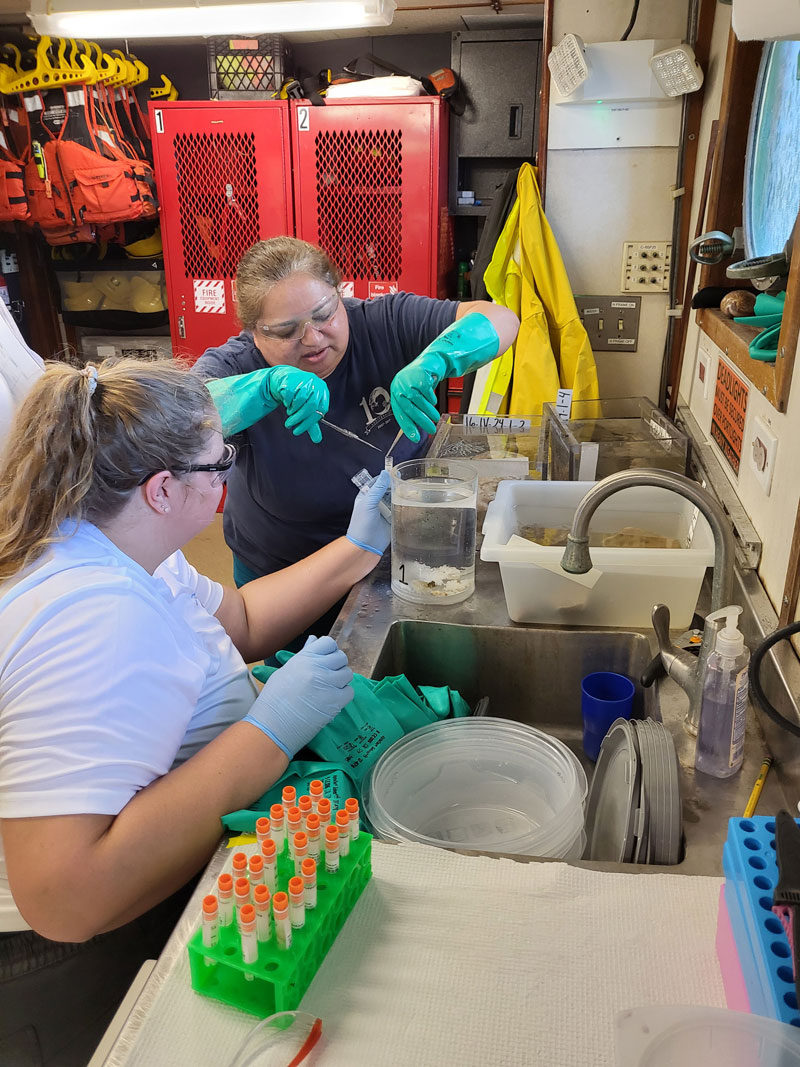
While at sea, the team was also interested in documenting fish, invasive coral, and trash. Unfortunately, they saw very few fish during most dives, which suggested the areas have been overfished. While they did see many invasive lionfish, they didn’t see any invasive corals at the depths they visited.
Despite the many successful collections, the expedition wasn’t all smooth sailing. Prior to departure, the team had difficulties setting expedition dates and getting the required research permits. While at sea, bad weather, seasick teammates, and issues with the ship and the ROV presented anticipated and unanticipated challenges. Yet, through it all, team members persevered: the ship crew worked all night to repair the ship’s engine, the ROV crew operated for most of the expedition without the ability to track the ROV, and the science crew stepped in and helped wherever they could. The exemplary teamwork made for a pleasant expedition and contributed to its success.
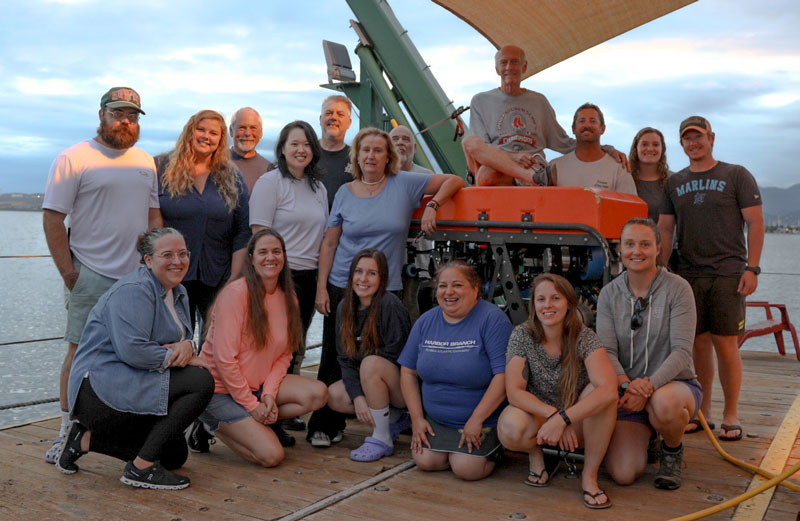
Back on shore, samples and subsamples collected during the expedition have been stored in and will be shared via a suite of long-term repositories to enable future biopharmaceutical research and development. In the near term, select samples are being studied for identification purposes and others are being processed further and will be tested to determine their biotechnological potential. Knowledge gained as a result of this work will contribute to the treatment and prevention of existing and emerging illnesses and diseases.
Images and Videos
Features
Meet the Explorers
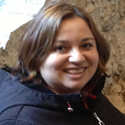
Esther Guzmán
Principal Investigator/Co-Chief Scientist
Harbor Branch Oceanographic Institute, Florida Atlantic University
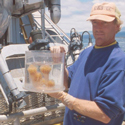
John Reed
Co-Chief Scientist
Harbor Branch Oceanographic Institute, Florida Atlantic University
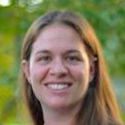
Priscilla Winder
Research Scientist
Harbor Branch Oceanographic Institute, Florida Atlantic University
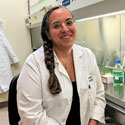
Megan Conkling
Research Scientist
Harbor Branch Oceanographic Institute, Florida Atlantic University

Courtney Brooks
Outreach and Marine Education Specialist
Harbor Branch Oceanographic Institute, Florida Atlantic University
Education Content
Education Theme pages provide the best of what the NOAA Ocean Exploration website has to offer to support educators in the classroom related to this project. Each theme page includes expedition features, lessons, multimedia, career information, and associated past expeditions.
Related Links
- Do medicines come from the sea?
- Biological Diversity Equals Chemical Diversity — The Search for Better Medicines
- The Diversity of Sponges
- Exploring the Blue Economy Biotechnology Potential of Deepwater Habitats
- Medicines from the Deep Sea: Exploration of the Gulf of Mexico
- Remotely Operated Vehicles
- Research Vessel F.G. Walton Smith
Partners
Media Contacts
Emily Crum
Communications Specialist
NOAA Ocean Exploration
ocean-explore-comms@noaa.gov
Chelsey Matheson
Associate Director, Research Communications
Harbor Branch Oceanographic Institute at Florida Atlantic University
cmatheson@fau.edu
Funding for this expedition was provided by NOAA Ocean Exploration via its Ocean Exploration Fiscal Year 2023 Funding Opportunity and NOAA’s Deep Sea Coral Research and Technology Program.
Published July 24, 2024
Last updated October 3, 2024
